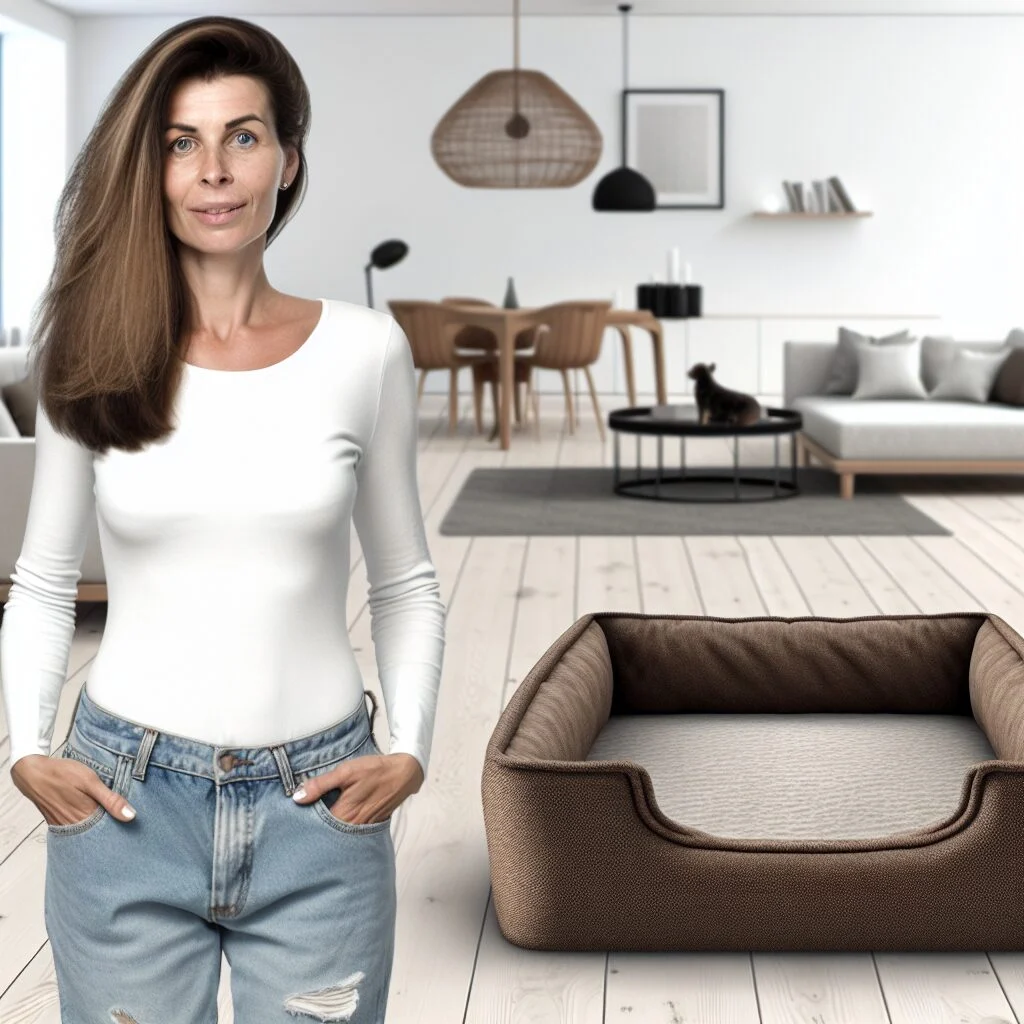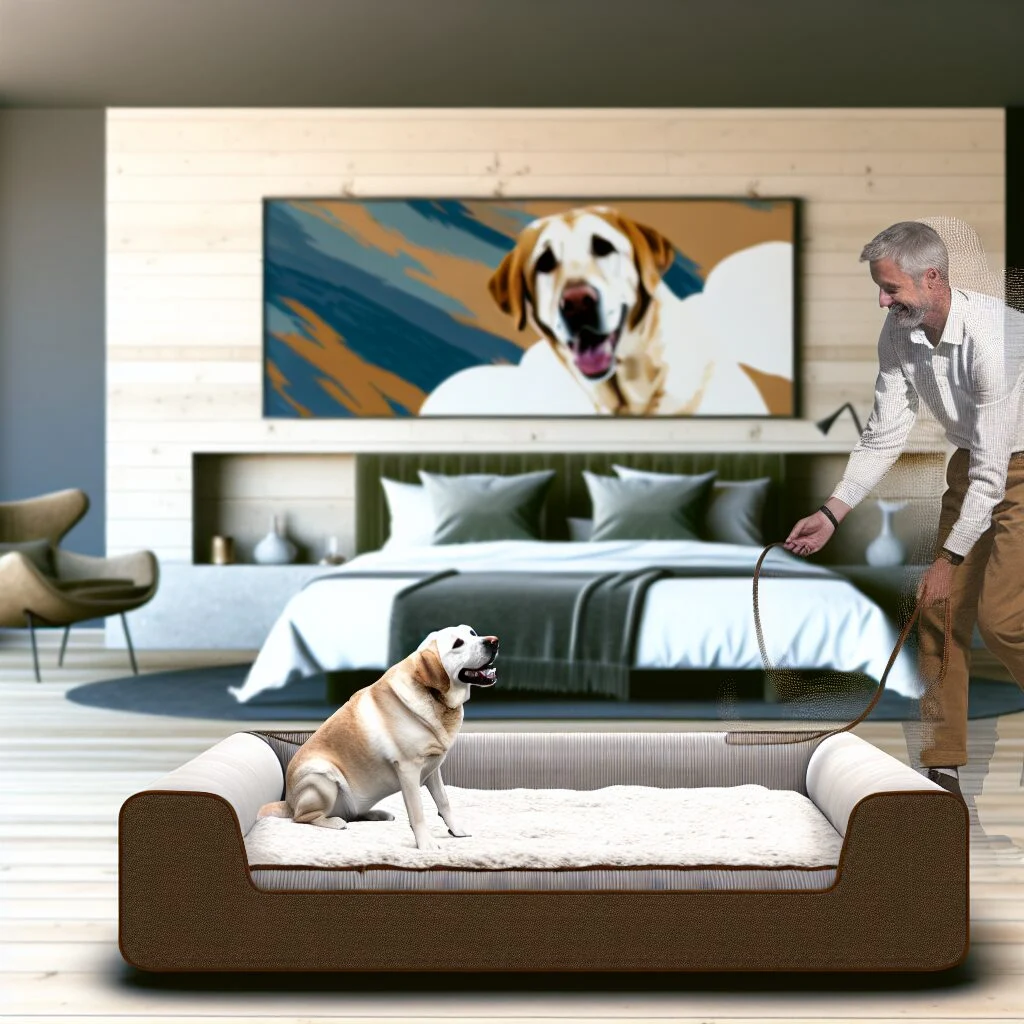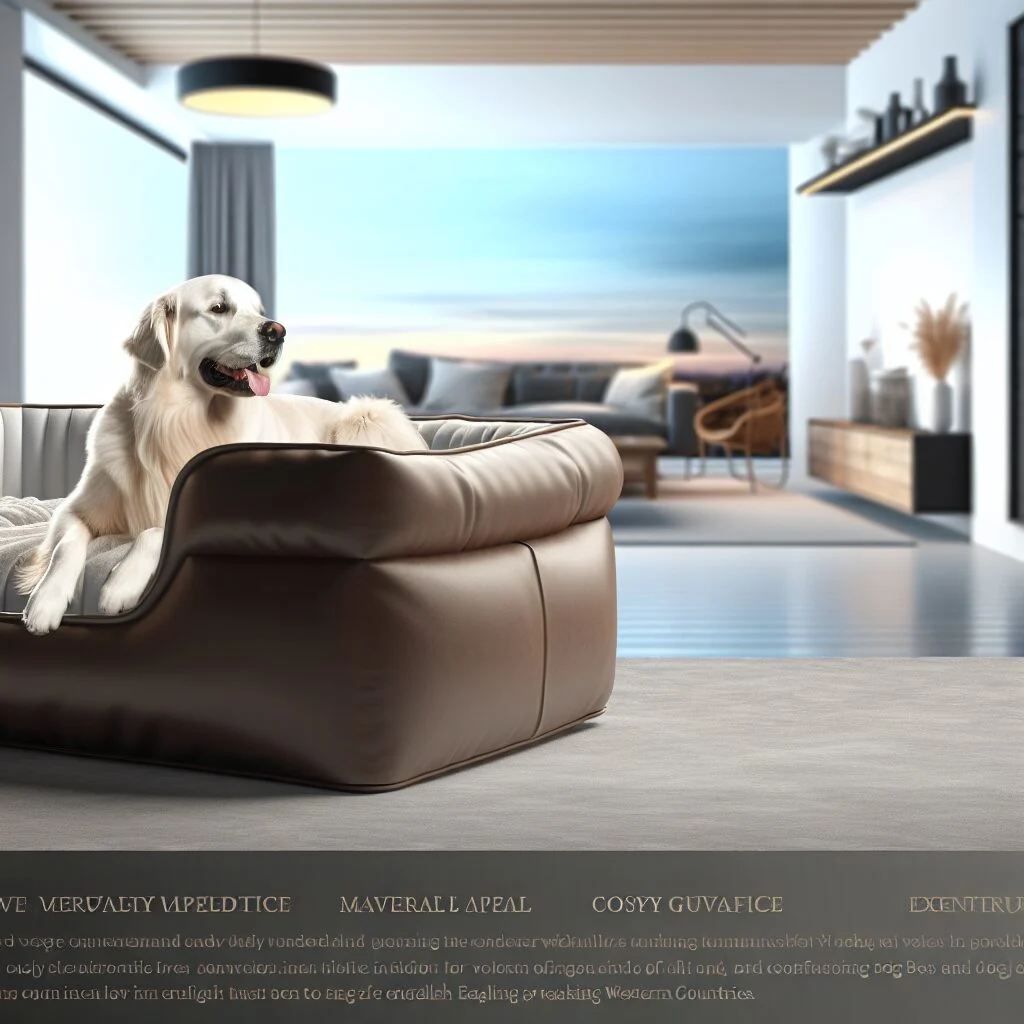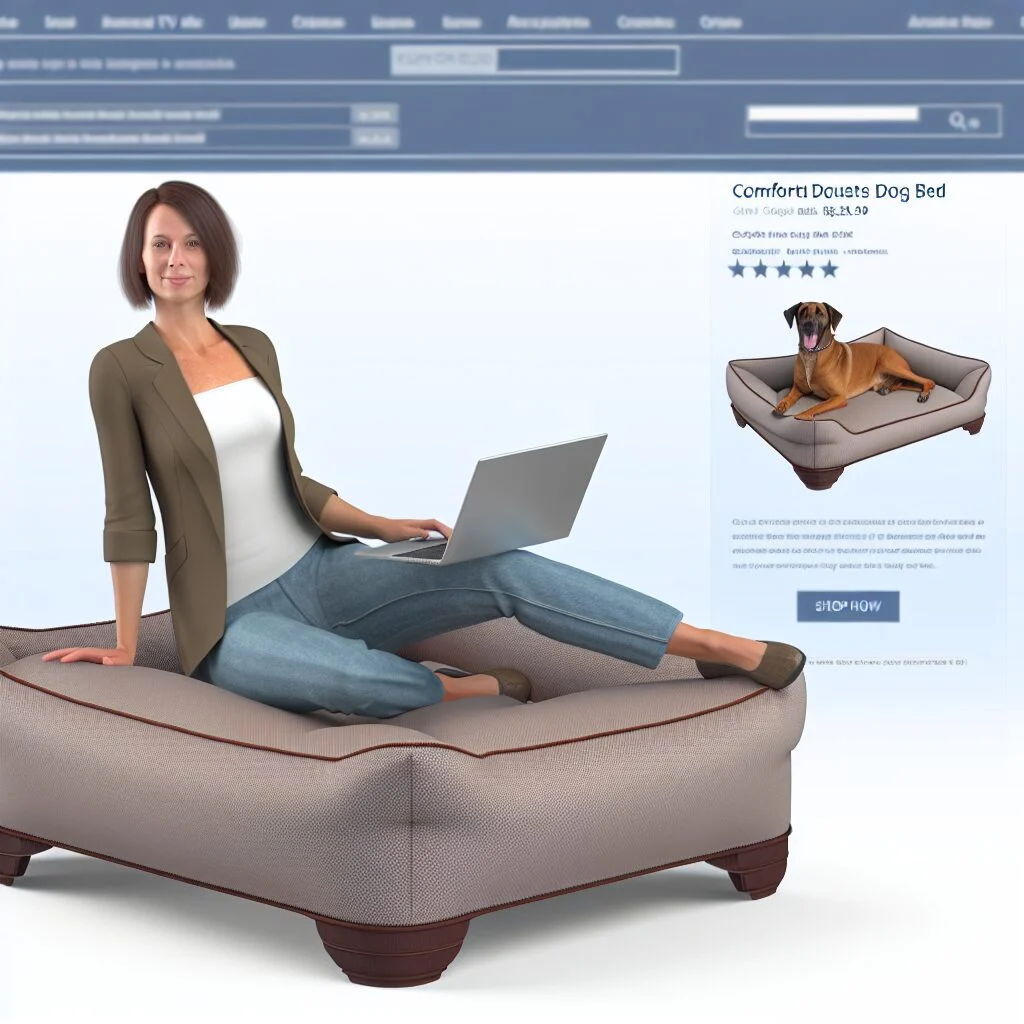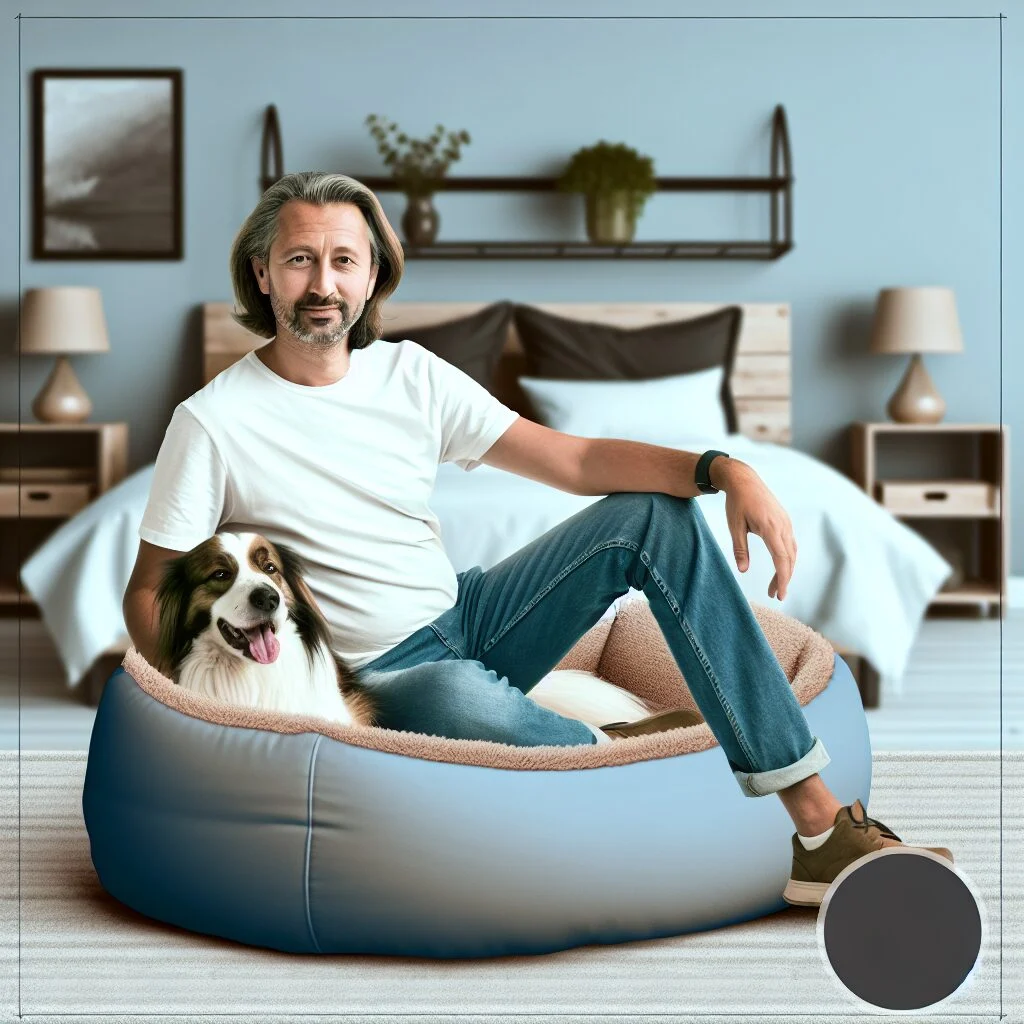The Ultimate Guide to Human Pet Beds: Creating the Perfect Sleep Space for You and Your Furry Friend
In recent years, a unique trend has emerged in the pet world that’s transforming how we share our living spaces with our beloved furry companions. The human pet bed—an innovative sleeping solution that combines human comfort with dedicated pet space—has become increasingly popular among pet owners who want to maintain a close bond with their pets while ensuring everyone gets a good night’s sleep. This comprehensive guide explores everything you need to know about human pet beds, from their benefits and types to DIY instructions and purchasing options.
Understanding the Human Pet Bed Concept
A human pet bed is exactly what it sounds like—a bed designed for both human and pet use, typically featuring a dedicated sleeping area for your furry friend that’s attached to or integrated with your own bed. These innovative sleep systems come in various designs, from beds with built-in pet nooks underneath to side-attached pet hammocks and platform extensions.
The concept addresses a common challenge for pet owners: wanting to keep pets close during sleep time without sacrificing comfort or space. Many pet owners allow their dogs or cats to sleep on their beds, which can lead to disrupted sleep, limited space, and sometimes hygiene issues. The human pet bed offers the perfect compromise—keeping your pet close while giving everyone their own dedicated sleep space.
Benefits of Human Pet Beds for You and Your Furry Friend
Strengthens the Human-Pet Bond
One of the most significant benefits of a human pet bed is how it nurtures the bond between you and your pet. Dogs and cats are social animals that crave proximity to their human family members. By providing a sleeping arrangement that keeps them close, you’re acknowledging their need for connection while maintaining appropriate boundaries.
Research has shown that proximity to owners can reduce anxiety in pets, particularly those with separation issues. The human pet bed allows your furry friend to see, smell, and sense you throughout the night, creating a sense of security and belonging that contributes to their overall well-being.
Improves Sleep Quality for Everyone
If you’ve ever shared your bed with a pet, you know it can sometimes lead to disrupted sleep—whether from their movement, snoring, or tendency to sprawl across your sleeping space. A human pet bed provides the perfect solution by giving your pet their own comfortable space while keeping them close enough to satisfy their need for proximity.
For pets, particularly older dogs with joint issues, having a properly designed sleeping surface can significantly improve their comfort and sleep quality. Many human pet beds can be customized with orthopedic foam or other supportive materials to address specific pet health needs while maintaining a stylish, cohesive look with your own bed.
Space Efficiency and Organization
Human pet beds are especially valuable for those living in smaller spaces like apartments or condos. Rather than having two entirely separate beds taking up precious floor space, an integrated sleeping system maximizes spatial efficiency. The design often incorporates storage solutions as well, providing a place for pet toys, blankets, and other accessories.
Beyond just saving space, these integrated bed systems create a more organized and aesthetically pleasing bedroom environment. No more unsightly pet beds that clash with your decor—human pet beds can be designed to complement your existing furniture and style preferences.
Popular Human Pet Bed Designs
Under-Bed Pet Nooks
Perhaps the most common human pet bed design is the under-bed nook or drawer. This design typically features a platform bed for humans with a built-in, pull-out drawer or recessed area underneath that serves as the pet’s dedicated sleeping space. These designs work particularly well for smaller to medium-sized dogs and cats who enjoy den-like sleeping environments.
The benefits of this design include maximizing vertical space usage, providing a cozy, enclosed feeling for pets, and maintaining a clean, minimalist aesthetic. Many designs incorporate easy-access steps or ramps for older pets who might struggle to climb or jump. The drawer designs also allow you to close away the pet bed when not in use, keeping your bedroom looking tidy.
Side-Attached Pet Platforms
Another popular option is the side-attached pet platform or extension. These designs feature a smaller pet bed that attaches securely to the side of your bed frame, creating a connected but separate sleeping surface. Many of these are height-adjustable to perfectly align with your mattress height.
Side-attached designs are particularly good for pets who like to maintain visual contact with their owners throughout the night. They also work well for smaller spaces where an under-bed design might not be practical. Some models are removable or foldable, providing flexibility for changing needs or when traveling with your pet.
Hammock-Style Attachments
A newer trend in the human pet bed market is the hammock-style attachment. Products like the ZAOWU Cat Hammock Bed attach securely to the side of your bed frame and provide a suspended, nest-like sleeping space for smaller pets. These designs are particularly popular with cat owners and those with small dog breeds.
The hammock style offers several advantages: they take up minimal space, can be easily attached and removed, and many pets enjoy the gentle swaying motion that mimics being held. The elevated design also helps pets feel secure while maintaining a clear line of sight to their human companions.
DIY Human Pet Bed: Step-by-Step Guide
Building your own human pet bed can be a rewarding project that allows you to create a custom solution perfectly tailored to your and your pet’s needs. Here’s a comprehensive guide to creating your own human bed with a dog bed underneath or attached to the side.
Planning Your Design
Before gathering materials or making any cuts, it’s essential to plan your human pet bed design carefully. Consider your pet’s size, age, and sleeping preferences, as well as your available space and aesthetic preferences. Sketch out your design, including measurements, to serve as a blueprint for your project.
Key considerations during the planning phase include:
- Size requirements for both human and pet portions
- Access points for your pet (steps, ramps, or direct entry)
- Material preferences based on durability and design
- Storage needs for pet accessories
- Weight capacity requirements
- Ease of cleaning and maintenance
Materials and Tools Needed
The specific materials required will depend on your chosen design, but here’s a comprehensive list of common items needed for most human pet bed projects:
Materials:
- Lumber for the bed frame (typically 2x4s, 2x6s, or similar depending on design)
- Plywood for platform surfaces (3/4″ thickness recommended for durability)
- Wood screws and hardware (various sizes)
- Foam mattress or mattress topper for the pet area
- Waterproof fabric or liner (optional but recommended)
- Comfortable, washable fabric for the pet bed cover
- Finishing materials (paint, stain, or sealant)
- Non-slip material for steps or ramps if included
- Carabiners or clips for hammock-style attachments
Tools:
- Measuring tape and pencil
- Circular saw or table saw
- Drill and various drill bits
- Screwdriver (or screwdriver bits for drill)
- Sander
- Staple gun
- Sewing machine (for fabric components)
- Safety equipment (goggles, gloves, etc.)
Construction Process for Under-Bed Design
If you’re creating an under-bed design with a pull-out pet drawer or nook, follow these steps:
Step 1: Build the Base Frame
Start by constructing the base frame for your platform bed. This typically involves creating a rectangular frame using 2x4s or 2x6s, with additional support beams across the middle to support the mattress. Ensure the frame is sized appropriately for your mattress with a few inches of clearance on all sides.
When designing the base frame, make sure to account for the height needed for the pet area underneath. You’ll want enough clearance for your pet to enter and exit comfortably while ensuring your human bed isn’t too high off the ground.
Step 2: Create the Pet Compartment
Next, build the framework for the pet bed area underneath your main bed frame. This can be designed as a pull-out drawer or a fixed compartment with an open entrance. If creating a drawer, you’ll need to install drawer slides on each side to allow for smooth operation.
For the pet bed base, use plywood cut to the appropriate size, ensuring it’s sturdy enough to support your pet’s weight. Add low walls around the edges to create a contained space that will hold the pet bedding in place.
Step 3: Add the Mattress Support and Finishing Touches
Install slats or a solid plywood piece across the top frame to support your mattress. For the pet area, add comfortable bedding such as foam cut to size and covered with washable, pet-friendly fabric.
Finally, sand all exposed edges and corners to prevent injuries, and apply your chosen finish to protect the wood and enhance appearance. Consider adding decorative elements that match your bedroom decor for a cohesive look.
Construction Process for Side-Attached Design
If you prefer a side-attached pet bed design, follow these alternative steps:
Step 1: Create the Attachment Mechanism
Design a secure method to attach the pet bed to your existing bed frame. This could involve brackets, clamps, or a platform that slides partially under your mattress for stability. The attachment mechanism must be strong enough to support your pet’s weight without tipping or detaching.
Step 2: Build the Pet Platform
Construct a sturdy platform sized appropriately for your pet. This typically involves creating a frame with plywood on top and possibly low walls around the edges to prevent your pet from rolling off during sleep.
If building a hammock-style attachment, you’ll need to create a frame that supports the fabric hammock and attaches securely to your bed. Use strong fabric for the hammock portion, with reinforced stitching at stress points.
Step 3: Add Comfort and Safety Features
Add a comfortable mattress or pad to the pet platform, preferably with a removable, washable cover. Ensure all edges are smooth and there are no pinch points or gaps where your pet could get injured or stuck.
For older pets, consider adding small steps or a ramp to help them access the platform easily. These should have a non-slip surface to prevent accidents.
Eco-Friendly Human Pet Bed Options
For environmentally conscious pet owners, creating or purchasing an eco-friendly human pet bed is an excellent way to reduce your carbon footprint while providing a healthy sleeping environment for both you and your pet.
Sustainable Materials to Consider
When building or shopping for an eco-friendly human pet bed, look for these sustainable materials:
- Reclaimed or FSC-certified wood: Using reclaimed wood from old furniture or demolition projects gives new life to existing materials. Alternatively, look for wood certified by the Forest Stewardship Council (FSC), which ensures it comes from responsibly managed forests.
- Natural, non-toxic finishes: Choose water-based, low-VOC paints and stains or natural oils like linseed or tung oil to finish wooden components.
- Organic cotton or hemp fabrics: These materials are grown with fewer pesticides and have a lower environmental impact than conventional cotton.
- Natural latex or wool bedding: For pet mattresses, consider natural latex (not synthetic) or wool filling, both of which are renewable resources with excellent durability.
- Cork or natural rubber: These materials make excellent non-slip surfaces for pet steps or ramps and are harvested without harming the trees or plants.
Non-Toxic Considerations for Pet Health
Beyond environmental concerns, eco-friendly materials often offer health benefits for both you and your pet. Many conventional furniture and bedding materials contain potential toxins such as formaldehyde, flame retardants, and volatile organic compounds (VOCs) that can off-gas into your home environment.
Pets, with their smaller body size and tendency to chew on or lick surfaces, can be particularly vulnerable to these chemicals. By choosing natural, non-toxic materials, you’re creating a healthier sleeping environment that reduces exposure to potentially harmful substances.
When selecting foam for pet bedding, look for options certified by organizations like CertiPUR-US, which tests for harmful chemicals and emissions. For fabrics, GOTS (Global Organic Textile Standard) certification ensures materials meet strict ecological and social criteria.
Purchasing Options: Best Human Pet Beds on the Market
If DIY isn’t your strength or you prefer the convenience of a ready-made solution, there are several excellent human pet beds available for purchase. Here are some top options based on design, quality, and customer satisfaction.
Top Picks for Under-Bed Designs
Several manufacturers now offer platform beds with integrated pet compartments underneath. While specific models and availability change regularly, look for these key features when shopping:
- Sturdy construction with quality hardware
- Smooth-operating drawer slides (if applicable)
- Easy access for your pet
- Appropriate sizing for both human and pet portions
- Quality materials and non-toxic finishes
- Washable pet bedding components
Many furniture retailers now carry integrated human-pet bed designs, though specialty pet retailers and online marketplaces like Etsy often offer more unique and customizable options.
Best Side-Attachment Options
For those preferring a side-attachment design, the PETIQUE Bedside Lounge Pet Bed offers an excellent combination of style and functionality. With its stylish zebra design and sturdy construction, this bed provides a comfortable resting place for medium-sized dogs while complementing your bedroom decor.
Another popular option is the ZAOWU Cat Hammock Bed, which features a plush nap mat suspended in a wire bed frame that attaches securely to your bed. This solution is ideal for smaller pets who enjoy elevated sleeping positions and the security of being close to their owners.
When shopping for attachment-style pet beds, look for these important features:
- Secure attachment mechanisms that won’t slip or detach
- Weight capacity appropriate for your pet
- Stability that prevents tipping or swaying (unless it’s a hammock design)
- Comfortable, washable bedding
- Easy installation and removal
Maintaining Your Human Pet Bed
Whether you’ve built your own human pet bed or purchased a ready-made option, proper maintenance is essential for longevity, hygiene, and comfort. Here are some key maintenance considerations to keep in mind.
Cleaning and Hygiene
Regular cleaning is crucial for any pet sleeping area to prevent odors, remove pet hair, and maintain a healthy environment. For fabric components:
- Choose removable, machine-washable covers for pet bedding whenever possible
- Wash pet bedding at least bi-weekly (more frequently for pets with allergies or skin conditions)
- Use pet-safe detergents that thoroughly clean without leaving residues that might irritate your pet’s skin
- Consider waterproof liners between the mattress/foam and the cover for pets prone to accidents
- Regularly vacuum the entire structure to remove pet hair and dander
For wooden components, dust regularly and wipe down with a slightly damp cloth as needed. Avoid harsh cleaning chemicals that might be harmful if your pet chews on the structure.
Structural Maintenance
Periodically check your human pet bed for any structural issues that might affect safety or comfort:
- Tighten any loose screws or hardware
- Inspect attachment mechanisms for wear or damage
- Check fabric components for tears or weak spots
- Examine wooden parts for splinters, cracks, or other damage
- Test the stability of the structure, especially for side-attached designs
For DIY beds, you might need to refinish wooden components every few years, depending on the type of finish used and the amount of wear. This maintenance helps preserve the appearance and prevents the wood from absorbing odors or moisture.
Bedding Replacement
Even with regular cleaning, pet bedding materials will eventually need replacement. Foam mattresses and cushions can break down over time, losing their support and comfort. As a general guideline:
- Replace foam components every 1-3 years, depending on quality and use
- Replace fabric covers when they show significant wear or cannot be cleaned effectively
- Consider seasonal bedding changes—cooler materials like cotton for summer and warmer options like fleece for winter
When replacing components, take the opportunity to reassess your pet’s needs. As pets age, they may benefit from orthopedic foam or additional padding to support arthritic joints and provide greater comfort.
Adapting Your Human Pet Bed for Special Needs
As pets age or if they have specific health conditions, you may need to adapt your human pet bed design to accommodate changing needs. Here are some considerations for special situations.
Senior Pets and Mobility Issues
Older pets often develop joint issues like arthritis that can make climbing, jumping, or navigating steps difficult. To accommodate these changes:
- Add gentle ramps with non-slip surfaces to help pets access elevated beds
- Incorporate orthopedic memory foam bedding for superior joint support
- Consider lowering the height of side-attached beds for easier access
- Add night lights near the pet bed area to help pets with declining vision navigate safely
- Ensure bedding is thick enough to provide cushioning for pressure points
For pets with severe mobility issues, under-bed designs may become impractical. In these cases, consider transitioning to a floor-level pet bed positioned adjacent to your bed, maintaining proximity while eliminating the need to climb.
Anxious Pets and Security Features
Some pets suffer from anxiety that affects their sleep quality. For these furry friends, consider these modifications:
- Add partial enclosures or “cave” features that create a den-like feeling of security
- Use weighted blankets designed specifically for pets to provide comforting pressure
- Position the pet bed to allow clear sightlines to your sleeping position
- Incorporate familiar-smelling items like a t-shirt you’ve worn
- Consider sound machines with heartbeat sounds for puppies or kittens still adjusting to sleeping separately
For pets with severe separation anxiety, designs that position them closer to your head rather than at the foot of the bed may provide additional comfort and security.
Multi-Pet Households
If you share your home with multiple pets, you may need to adapt your human pet bed design accordingly:
- Consider dual pet compartments for multiple smaller pets
- Create clear boundaries between pet spaces to prevent territorial disputes
- Design separate access points so pets can enter and exit without disturbing each other
- Ensure each pet has adequate space for their size and sleeping style
- Use washable, durable materials that can withstand increased use and cleaning
In multi-pet households, it’s also important to observe sleep dynamics between your pets. Some may prefer to cuddle together, while others need their own space. Your human pet bed design should accommodate these preferences for maximum harmony.
Integrating Your Human Pet Bed with Home Decor
A well-designed human pet bed doesn’t just provide functional benefits—it can also enhance your bedroom’s aesthetic appeal. Here are some tips for ensuring your human pet bed complements your overall home decor.
Matching Materials and Colors
For visual cohesion, choose materials and colors for your human pet bed that coordinate with your existing bedroom furniture. This is particularly important for the visible components of the bed:
- Select wood stains that match or complement other wooden furniture in the room
- Choose fabric colors and patterns that harmonize with your bedding and room color scheme
- Consider the overall style of your room (modern, traditional, rustic, etc.) and ensure the pet bed components reflect this aesthetic
- Use similar hardware (drawer pulls, visible brackets, etc.) to those on other furniture pieces
If you’re purchasing a ready-made human pet bed, look for options that offer customization in terms of finishes and fabrics to better match your existing decor.
Dual-Purpose Features
To maximize functionality and aesthetic appeal, consider incorporating dual-purpose features into your human pet bed design:
- Storage drawers adjacent to the pet compartment for linens or pet supplies
- Integrated nightstands or shelving
- Headboards with built-in lighting or storage
- Decorative screens or panels that can hide the pet area when not in use
- Convertible components that can be reconfigured as needed
These multi-functional elements not only enhance the practical value of your human pet bed but also help it feel like an intentional, designed aspect of your room rather than an accommodation afterthought.
Accessorizing with Style
The accessories you choose for your pet’s portion of the bed can significantly impact the overall look. Consider these stylish yet practical additions:
- Coordinating pet blankets and bedding that complement your own linens
- Decorative but durable pet toys that can remain in the pet area without creating visual clutter
- Custom name plates or decorative signage designating the space as your pet’s special area
- Tasteful pet steps or ramps finished in materials that match your flooring or bed frame
- Ambient lighting that creates a warm atmosphere for both human and pet spaces
Remember that pet accessories should be both functional and aesthetically pleasing. Items that serve a purpose while enhancing your decor offer the best of both worlds.
Conclusion: Creating the Perfect Sleep Haven for You and Your Pet
The human pet bed represents a thoughtful evolution in how we share our living spaces with our beloved animal companions. By creating dedicated yet connected sleeping areas, these innovative designs honor the bond between humans and pets while addressing practical considerations like comfort, space efficiency, and sleep quality.
Whether you choose to build your own custom human pet bed or purchase a ready-made solution, the key is thoughtful consideration of both your needs and those of your pet. Consider size, accessibility, comfort, safety, and aesthetic preferences when designing or selecting your ideal setup.
Remember that your pet’s needs may change over time due to aging or health conditions, so build flexibility into your design when possible. With proper maintenance and occasional adaptations, your human pet bed can provide years of comfortable, close sleeping arrangements that strengthen your bond with your furry family member.
By investing in a well-designed human pet bed, you’re creating more than just a piece of furniture—you’re crafting a shared sanctuary that acknowledges your pet’s importance in your life while ensuring everyone enjoys restful, comfortable sleep. Sweet dreams to you and your furry friend!
Frequently Asked Questions About Human Pet Beds
What materials do I need to make a human pet bed?
To make a human pet bed, you’ll need lumber for the frame (typically 2x4s and plywood), hardware like screws and brackets, comfortable foam or mattress material for the pet section, waterproof fabric liner (optional but recommended), washable fabric for covers, and finishing materials like paint or stain. Tools required include a saw, drill, measuring tape, sander, and potentially a sewing machine for fabric components. The specific materials will vary based on your chosen design.
Can I make an eco-friendly human pet bed?
Yes, you can create an eco-friendly human pet bed by using sustainable materials like reclaimed or FSC-certified wood, natural non-toxic finishes, organic cotton or hemp fabrics, and natural filling materials like wool or natural latex. Avoid synthetic foams, fabrics treated with flame retardants, and toxic adhesives or finishes. These eco-friendly choices benefit both the environment and your pet’s health by reducing exposure to potentially harmful chemicals.
What are the best commercial human pet beds available?
Some popular commercial human pet beds include the PETIQUE Bedside Lounge Pet Bed, which offers a stylish side-attachment design for medium-sized dogs, and the ZAOWU Cat Hammock Bed, which provides a suspended sleeping space ideal for cats and small dogs. When shopping, look for beds with secure attachment mechanisms, appropriate weight capacity for your pet, comfortable and washable bedding, and a design that complements your bedroom decor. Custom options are also available from furniture makers and on marketplaces like Etsy.
How do I maintain and clean a human pet bed?
Maintain your human pet bed by regularly washing removable covers (ideally bi-weekly) using pet-safe detergents. Vacuum the structure frequently to remove hair and dander. For wooden components, dust regularly and wipe with a slightly damp cloth as needed. Periodically check for loose screws or hardware and tighten as necessary. Replace foam components every 1-3 years as they break down with use. For pets prone to accidents, use waterproof liners between mattresses/foam and fabric covers to protect the structural elements.
How can I adapt a human pet bed for an elderly pet?
For elderly pets, adapt your human pet bed by adding gentle ramps with non-slip surfaces to help them access elevated areas. Incorporate orthopedic memory foam bedding to provide better joint support and pressure relief. Consider lowering side-attached beds for easier access or transitioning to a floor-level design adjacent to your bed. Add night lights to help pets with declining vision navigate safely at night. Ensure bedding is thick enough to cushion pressure points, and choose washable materials as older pets may have more accidents.
Can I make a waterproof human pet bed?
Yes, you can make a waterproof human pet bed by using waterproof fabric for the cover or adding a waterproof liner between the cover and the foam. Waterproof options include PUL (polyurethane laminate) fabric, waterproof canvas, or specially designed pet bed liners. For added protection, treat wooden structural elements with water-resistant (but pet-safe) sealants to prevent damage from occasional accidents. Make sure any waterproof materials you choose are still breathable and comfortable for your pet while providing the protection you need.
Looking for more information about pet-friendly furniture? Check out these resources:
